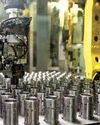Empire Of Babus

WHEN NARENDRA Modi became Prime Minister, he took two immediate key decisions. One, he disbanded the Groups of Ministers (GoMs) that had mushroomed to more than 20 during the UPA government. Two, he called a meeting of more than 75 senior bureaucrats cutting across ministries.
The message: you now have direct access to me. Work hard and work fast. The intent: to replace India’s notoriousred tape with a red carpet — a Modi campaign promise. The outcome: the babus worked hard and fast for several months. Without tedious, interminable and often infructuous GoM meetings the bureaucracy became energised.
It didn’t last. The Indian bureaucracy is a unique animal. Created as the Indian Civil Service (ICS) by the British, it formed what Jawaharlal Nehru called India’s “steel grid”. The ICS morphed after Independence into the IAS but the change in alphabet hid the fact that real changes did not occur. The ICS had served an exploitative empire. The nomenclature it gave its officers gave the game away: for example, District Collectors were principally tasked to collect taxes from the districts.
After Independence, the IAS should have changed not only such honorifics (69 years later, it still hasn’t) but also its mission: to serve, not rule. The steel grid of the civil service has long rusted. Worse, it has been co-opted by unsavoury politicians. Most of the serial corruption scandals since Bofors in 1987 have had a political-bureaucratic nexus.
Much of this usurious corruption has sprung from the Ministry of Defence (MoD) and the Ministry of Finance (MoF). The former controls large defence purchase budgets. Bureaucrats with negligible knowledge of defence technology decide billion-dollar deals.
This story is from the {{IssueName}} edition of {{MagazineName}}.
Start your 7-day Magzter GOLD free trial to access thousands of curated premium stories, and 9,000+ magazines and newspapers.
Already a subscriber ? Sign In
This story is from the {{IssueName}} edition of {{MagazineName}}.
Start your 7-day Magzter GOLD free trial to access thousands of curated premium stories, and 9,000+ magazines and newspapers.
Already a subscriber? Sign In

MEMORIES & IMPRESSIONS
Ratan Tata was an exceptional human being. He was a visionary leader, esteemed industrialist, and a humanitarian, who left an indelible mark on India and the world.

The Robotaxi Market
The robotaxi market is shaping up to be a high-stakes battleground as tech giants and automakers race to transform urban mobility.

And the Nobel Prize Goes to AI
The recent Nobel Prize T awards to AI pioneers affiliated with Google have sparked a broader conversation about Big Tech's influence on research and the limitations of traditional prize categories.

Ola Electrified
Once considered a trailblazer in India’s electric vehicle (EV) ecosystem, Bhavish Aggarwal’s Ola Electric now faces a major accountability crisis.

Sharp Slide in Industrial Output on Eve of Deepavali
India’s index of industrial production (IIP) saw a sharp reversal in August, contracting by 0.1 per cent, in stark contrast to the 4.7 per cent growth in July, mostly because of significant contractions in mining and electricity generation.

Heralding the Solar Era with Sustainable Electrification
RAJEEV KASHYAP on the economics of solar power, the hurdles in scaling it, and much more

A WELL-GREASED MACHINE
The OmniBook X14 laptop runs on first-generation Snapdragon X Elite, which bets big on Al-enabled productivity and battery life, but falls short when it comes to overall experience, says Deep Majumdar

DO NOT LETA HEALTH CRISIS RUIN YOUR FINANCIAL HEALTH
For a family of four living in a metro, it is recommended to opt for a family floater health insurance plan with a sum insured of at least Rs 15-20 lakh

Disruption Ahead: Beyond Organisation Charts and Structures
ALBERT EINSTEIN FAMOUSLY said, “We cannot solve our problems with the same thinking we used when we created them.

Dr. Rahul Shivajirao Kadam: A Visionary Leader Blending Sustainability, Innovation, And Social Empowerment
We are on the stage of global warming, and these technologies not only help prevent further damage but also leave behind a better environment for future generations.